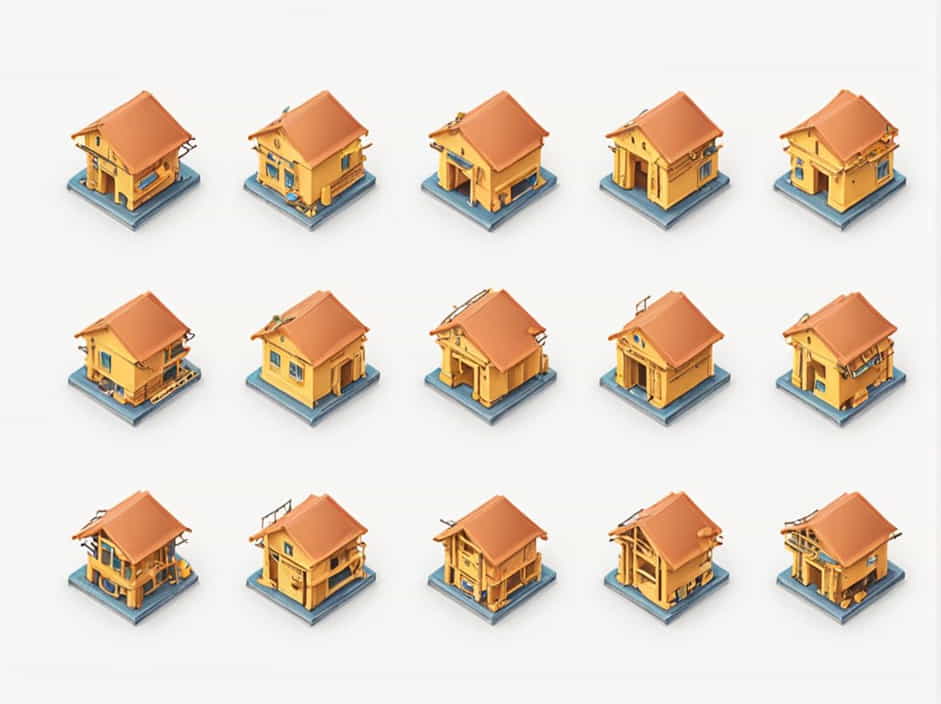In building construction, every structure consists of two main parts: the substructure and the superstructure. These components play a crucial role in ensuring the stability, durability, and functionality of a building.
The substructure refers to the portion of a building below ground level, primarily responsible for supporting the load of the structure. The superstructure, on the other hand, is the visible part above ground, including walls, floors, and roofs.
This topic explores the key differences, components, and importance of both substructure and superstructure in modern building construction.
What is a Substructure?
Definition
The substructure is the lowest part of a building, located below ground level. It supports the entire weight of the structure and distributes it evenly to the soil beneath.
Functions of the Substructure
- Provides stability and strength to the building.
- Protects the structure from settlement and ground movement.
- Resists moisture and soil pressure.
- Transfers the load safely to the earth.
Main Components of a Substructure
1. Foundation
The foundation is the most important part of the substructure. It transfers the load of the building to the soil and ensures stability. There are two main types of foundations:
-
Shallow Foundation – Used for small buildings where the soil is strong. Examples:
- Strip Foundation
- Raft Foundation
- Pad Foundation
-
Deep Foundation – Used for high-rise buildings and weak soil conditions. Examples:
- Pile Foundation
- Pier Foundation
2. Plinth
The plinth is the portion between the ground level and the floor level. It acts as a barrier against moisture and prevents water from seeping into the building.
3. Damp Proof Course (DPC)
A DPC layer is installed to prevent moisture from rising into the superstructure. It is usually made of concrete, bitumen, or waterproof materials.
4. Retaining Walls
In buildings constructed on slopes or uneven land, retaining walls prevent soil erosion and provide additional support.
What is a Superstructure?
Definition
The superstructure is the portion of the building above ground level. It includes all elements that form the usable space of a building, such as walls, floors, roofs, and columns.
Functions of the Superstructure
- Provides shelter and living space.
- Ensures aesthetic appeal and architectural design.
- Distributes wind and seismic forces safely.
- Houses utility systems such as electrical wiring and plumbing.
Main Components of a Superstructure
1. Columns and Beams
Columns and beams provide the structural framework of a building. They transfer loads from the roof and floors to the foundation.
2. Walls
Walls act as enclosures and load-bearing elements in a superstructure. Types of walls include:
- Load-bearing walls – Support structural weight.
- Partition walls – Divide rooms and spaces.
- Curtain walls – Lightweight, non-load-bearing walls used in modern buildings.
3. Floors
Floors provide horizontal surfaces for living and working spaces. Types of flooring include:
- Concrete floors – Used in commercial and industrial buildings.
- Wooden floors – Common in residential houses.
- Tiled floors – Provide aesthetics and easy maintenance.
4. Roof
The roof covers the top of a building and protects it from weather conditions. Common types of roofs include:
- Flat Roof – Used in modern buildings.
- Pitched Roof – Sloped roof for better drainage.
- Green Roof – Eco-friendly with vegetation cover.
5. Doors and Windows
- Doors provide access to different rooms and spaces.
- Windows allow natural light and ventilation.
6. Staircases and Elevators
- Staircases connect different floors in low-rise buildings.
- Elevators and escalators are essential in high-rise structures for accessibility.
Differences Between Substructure and Superstructure
| Feature | Substructure | Superstructure |
|---|---|---|
| Location | Below ground level | Above ground level |
| Main Purpose | Provides foundation and stability | Creates functional space |
| Key Components | Foundation, plinth, damp-proof course | Columns, walls, floors, roof |
| Load Distribution | Transfers load to soil | Transfers load to substructure |
| Exposure to Weather | Mostly underground | Exposed to environmental conditions |
Importance of a Strong Substructure and Superstructure
1. Ensures Structural Integrity
A well-designed substructure prevents settlement and collapse, while a strong superstructure ensures durability and safety.
2. Protects Against Environmental Factors
The substructure must resist moisture and soil pressure, while the superstructure must withstand wind, rain, and seismic forces.
3. Enhances Longevity of the Building
Proper construction of both elements ensures long-term durability, reducing maintenance and repair costs.
4. Provides Comfort and Functionality
The superstructure includes essential features like windows, ventilation, and insulation, improving comfort for occupants.
Factors Affecting Substructure and Superstructure Design
1. Soil Condition
- Weak or loose soil requires deep foundations.
- Rocky soil supports shallow foundations.
2. Load Requirements
- High-rise buildings require strong superstructure materials like reinforced concrete and steel.
- Lightweight structures can use timber or composite materials.
3. Climate and Environmental Conditions
- Areas with high rainfall need effective damp-proofing.
- Seismic zones require earthquake-resistant designs.
4. Material Selection
- Concrete and steel are commonly used for strength and durability.
- Glass and aluminum improve aesthetics and energy efficiency.
The substructure and superstructure are the two fundamental parts of any building. The substructure forms the foundation, ensuring stability and strength, while the superstructure creates the functional space above ground.
Both elements must be designed and constructed carefully to ensure safety, durability, and efficiency. Understanding their components, functions, and importance helps in building strong and sustainable structures.
